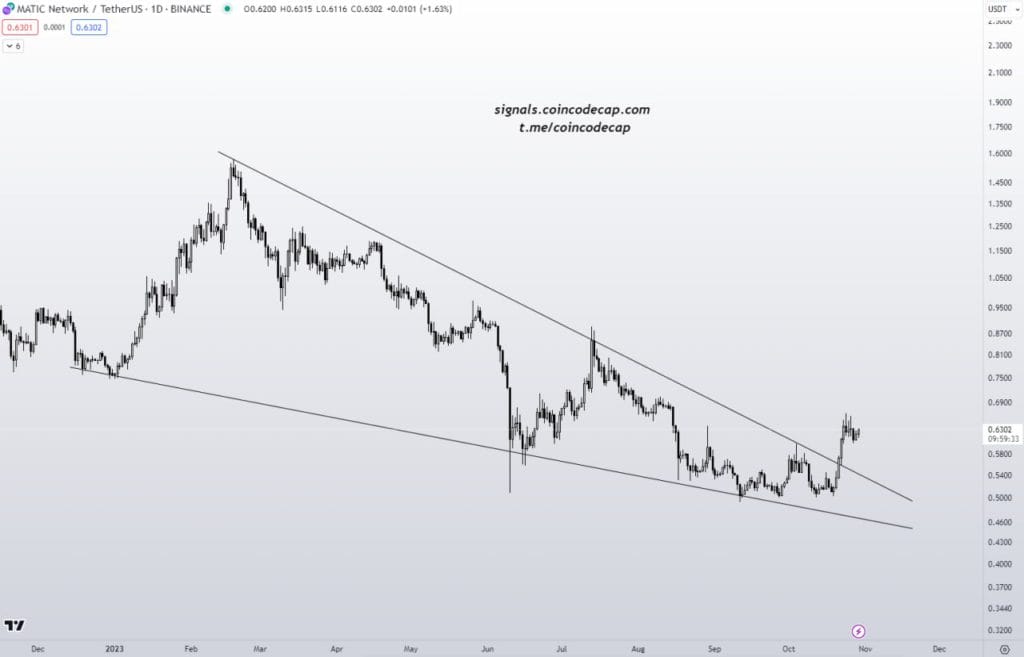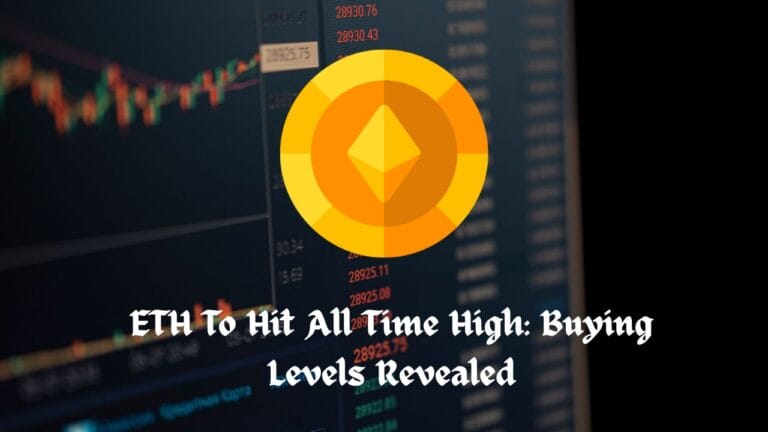Polygon (MATIC) is a layer-2 scaling solution for Ethereum that aims to provide faster, cheaper, and more secure transactions for decentralized applications. Polygon has been one of the most popular and successful projects in the crypto space, reaching a peak price of $2.68 in May 2021. However, since then, MATIC has been in a downtrend, losing more than 75% of its value and struggling to recover from the regulatory crackdown and market volatility.
Origins of Polygon
Polygon was launched in 2017 as Matic Network, a project that leveraged the Plasma framework to create scalable and secure sidechains for Ethereum. Plasma is a layer-2 scaling technique that allows for the execution of smart contracts off-chain, while periodically committing the state changes to the main chain. This way, Plasma can reduce the congestion and fees on Ethereum, while preserving its security and decentralization.
In February 2021, Matic Network rebranded to Polygon, expanding its scope and vision beyond Plasma. Polygon introduced its SDK (software development kit), a modular and flexible framework that allows developers to build various types of layer-2 solutions, such as optimistic rollups, ZK rollups, standalone chains, or hybrid systems. Polygon also integrated with other scaling solutions, such as Optimism, Arbitrum, zkSync, and Loopring, to create a multi-chain ecosystem that connects to Ethereum.
Polygon’s native token is MATIC, which is used for paying transaction fees, staking, governance, and incentivizing network participants. MATIC is an ERC-20 token that runs on the Ethereum blockchain, but can also be bridged to Polygon’s own proof-of-stake chain or other layer-2 chains. MATIC has a total supply of 10 billion tokens, of which about 6.3 billion are currently in circulation.
MATIC Crypto Current Price Analysis
MATIC is trading at $0.618885 as of October 29, 2023, with a market cap of $5.86 billion and a 24-hour volume of $356 million. MATIC is down by 3.82% in the last 24 hours and by 14.66% in the last week. MATIC is ranked as the 13th largest cryptocurrency by market cap1.
MATIC has been in a downtrend since reaching its all-time high of $2.68 on May 18, 2021. The price dropped sharply after China banned crypto transactions and mining in late May, triggering a market-wide sell-off. MATIC found some support around $0.8 in June and July, but failed to break above the resistance at $1.6. In August and September, MATIC consolidated between $0.6 and $1.4, forming a descending triangle pattern on the daily chart.

Soaring High Post-Falling Wedge Breakout! ????????
Anticipating the Next Thrilling Leap ????.
On October 4, MATIC broke below the triangle support at $0.6 and entered a bearish phase. The price dropped to as low as $0.48 on October 7, before bouncing back to $0.7 on October 11. However, the recovery was short-lived, as MATIC faced strong selling pressure at the former triangle support turned resistance. MATIC resumed its downtrend and reached a new low of $0.46 on October 27.
MATIC is currently trading below the 50-day and 200-day moving averages (MA), indicating a bearish trend. The 50-day MA is also below the 200-day MA, forming a death cross signal that suggests further downside potential. The relative strength index (RSI) is hovering around the oversold territory, indicating that MATIC is undervalued and may experience some relief rally soon. The MACD histogram is negative and below the signal line, indicating bearish momentum.
Future Outlook
MATIC faces several challenges in the near future that may affect its price performance. One of them is the regulatory uncertainty surrounding cryptocurrencies in general and layer-2 solutions in particular. Several countries have tightened their rules on crypto transactions and taxation, creating fear and confusion among investors and users. Layer-2 solutions may also face scrutiny from regulators who may question their compliance with anti-money laundering (AML) and consumer protection laws.
Another challenge for MATIC is the increasing competition from other scaling solutions that are gaining traction and adoption in the crypto space. Some of these include Optimism, Arbitrum, zkSync, Loopring, StarkWare, Immutable X, Solana, Avalanche, Binance Smart Chain, Cardano, Polkadot, Cosmos, and many more. These projects offer different trade-offs between scalability, security, decentralization, interoperability, and user experience.
However, MATIC also has some strengths and opportunities that may help it overcome these challenges and regain its bullish momentum. One of them is the strong support and loyalty from its community and partners, who have been using and building on Polygon for various use cases, such as gaming, NFTs, DeFi, DAOs, social tokens, and more. Polygon has attracted more than 500 DApps, 350 million transactions, and 13.5 million unique users to its network.
Another strength for MATIC is its continuous innovation and development, which aim to improve its scalability, security, usability, and compatibility with Ethereum and other blockchains. Polygon has recently launched several new features and products, such as:
- Polygon SDK, which allows developers to create custom layer-2 solutions with ease and flexibility.
- Polygon Hermes, which is a ZK rollup chain that supports EVM-compatible smart contracts and offers high throughput and low fees.
- Polygon Avail, which is a data availability layer that enables scalable and fraud-proof data solutions for any blockchain.
- Polygon Studios, which is a gaming and NFT hub that supports the creation, distribution, and monetization of blockchain-based games and digital collectibles.
- Polygon Ecosystem DAO, which is a decentralized organization that funds and supports projects and initiatives that contribute to the growth and development of the Polygon ecosystem.
MATIC may also benefit from the upcoming upgrades and innovations on Ethereum, such as the merge to proof-of-stake, the introduction of sharding, the implementation of EIP-1559, and the adoption of ZK rollups. These changes may increase the demand for Ethereum and its layer-2 solutions, as well as improve the interoperability and security of the network.
Conclusion
Polygon (MATIC) is a layer-2 scaling solution for Ethereum that offers fast, cheap, and secure transactions for decentralized applications. MATIC has been in a downtrend since May 2021, facing regulatory uncertainty and market volatility. MATIC is currently trading at $0.618885, below the key support and resistance levels. MATIC may face further downside pressure in the short term, unless it can break above the $0.6-$0.7 range.
However, MATIC also has some strengths and opportunities that may help it recover and resume its uptrend in the long term. MATIC has a loyal community and partners who use and build on Polygon for various use cases. MATIC also has a strong development team who constantly innovate and improve its scalability, security, usability, and compatibility with Ethereum and other blockchains. MATIC may also benefit from the upcoming upgrades and innovations on Ethereum.
Therefore, MATIC may be a good investment for those who believe in the potential of layer-2 scaling solutions and the future of Ethereum. However, investors should also be aware of the risks and challenges involved in investing in cryptocurrencies, especially in volatile and uncertain times.
For on-demand analysis of any cryptocurrency, join our Telegram channel.









